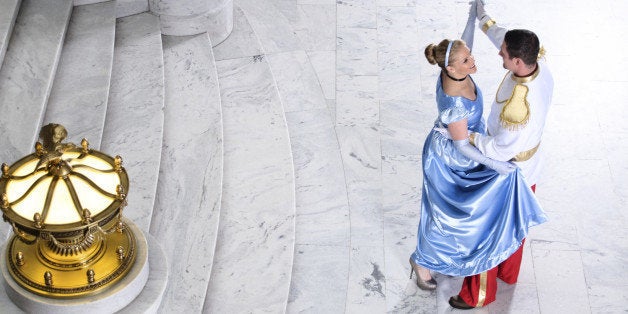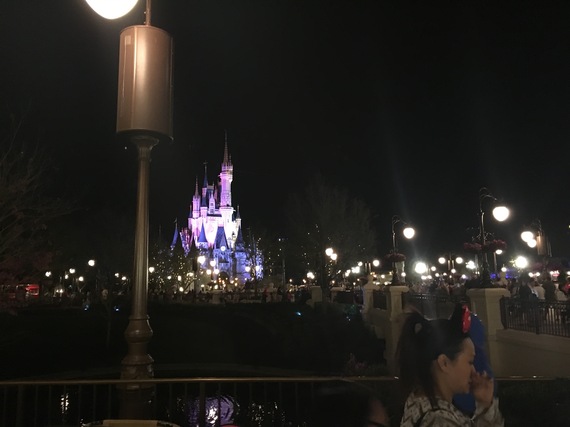
Walt Disney World remains a dream destination for millions of children. The magic, the costumes, the attractions, the music, the frozen desserts, all effortlessly combine to achieve nearly universal appeal among young kids. This widespread influence comes with a clear power but also a blurrier responsibility. What is Disney's role in facilitating healthy self-image among children? Should Disney be held accountable for the steps it takes (or fails to take) to break down harmful stereotypes? Is Disney meant to be a dream world for some children or all children?
At 22-years-old, I recently visited Disney World again. I was immediately struck not by the charming atmosphere but rather, by the lack of LGBTQ representation shown in that picturesque little world. What I was seeing scared me.
We are living in a monumentally progressive time here in the U.S. This is an era of true pioneers, including Ruby Rose, Jaden Smith, Miley Cyrus, Laverne Cox, etc. With the help of these courageous individuals, the "binary" view of society is slowly crumbling, giving way to a more inclusive conception of gender identity and sexual orientation. However, there is a lurking discrepancy between this progressive thinking and many signature U.S. institutions. Disney World is a prime example of such an institution.
Seemingly everywhere I looked there were traces of "binary" thinking, both ostentatious and subtle. Princes danced exclusively with princesses. Gift shops were divided in two pronouncedly different sections: one for boys and one for girls. One can easily learn the implicit rules of this world in one glance. Boys like red and play with lightsabers. On the contrary, pink and yellow are girls' colors. Good little girls like to dress-up in flowing gowns and jeweled tiaras. Boys grow up to be strong, desirable princes capable of rescuing fragile, beautiful princesses. There is no room in this world for a diverging gender identity or sexual orientation.
But why does this matter? According to LiveScience: "Kids develop an understanding of prejudice and discrimination in a fairly predictable manner. Between the ages of 3 and 6, they begin to understand and use stereotypes. After age 6, children start to understand other people's stereotypes, scientists have found." Disney caters to this young age group, many of its visitors are children that fall between the ages of 3 and 12-years-old. This age bracket represents an extremely developmental stage for children: the period where children begin to form their own opinions, prejudices, and conception of their own self-worth.
I first visited Disney when I was in third grade. I saw the smiling princesses and the brave princes. Three years later I would realize that I was gay. Over ten years would pass before I would muster up the courage to admit that I was different from those picturesque princesses waiting for their princes. Is this Disney's fault? Of course not. But it is this repetitive, constrictive image of what is "correct" or "acceptable" that Disney participates in (either willingly or unwillingly) that is dangerous and culminates in too many LGBTQ youth harboring a negative self-image from an early age.
Whenever I present on global LGBTQ rights today, I'm often asked a variation of the following question: Why does stigma surrounding the LGBTQ community still exist in the U.S. and what can we do to break it down? I believe that one of the main drivers of this toxic stigma is entrenched pop culture institutions' failure to incorporate more inclusive LGBTQ-friendly policies. The LGBTQ perspective is getting lost -- drowned out by the need to attract dollars and "mainstream" support. Is Disney anti-LGBTQ? I don't think so. Can Disney do more to promote inclusivity? Absolutely.
According to TIME Magazine, nearly 80 percent of transgender people report experiencing harassment in school when they were young. The Center for Disease and Prevention (CDC) reports that LGB youth are 4 times more likely, and questioning youth are 3 times more likely, to attempt suicide as their straight peers. According to The Trevor Project, nearly half of young transgender people have seriously thought about taking their lives, and one-quarter report having made a suicide attempt.
These striking statistics reveal the harsh reality that this pervasive stigma is continuing to kill many young people every year. It makes me wonder how many lives could be saved by making Disney World more inclusive? Why is Disney so hesitant to show two princesses in love or a young man proudly beaming in a flowing gown? I hope that we can all agree that the alternative, young people taking their own lives, is much scarier.

